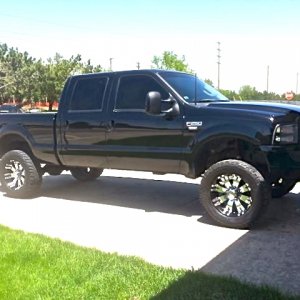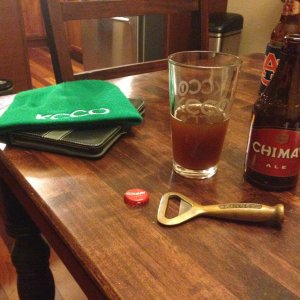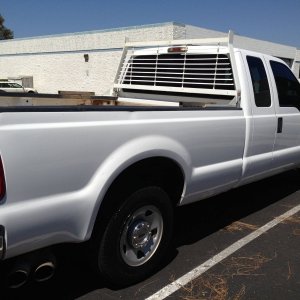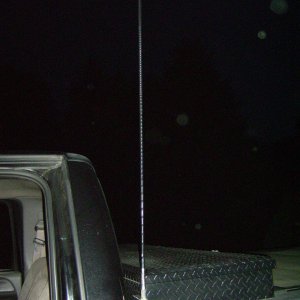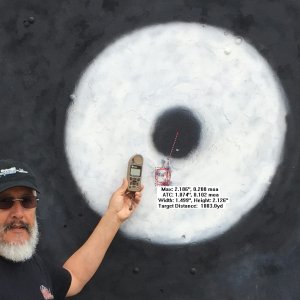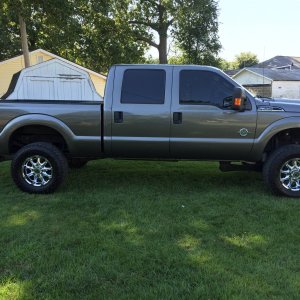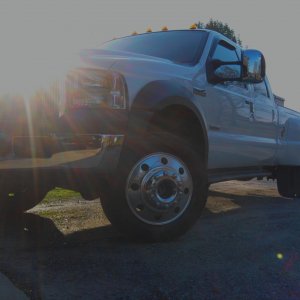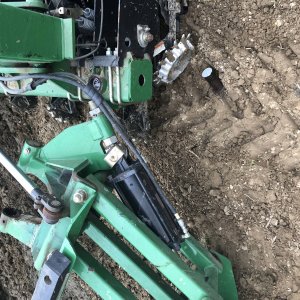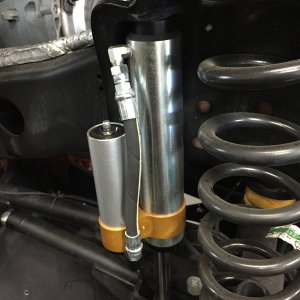maybe i can help shed a little light, on your apparent indecision.
each company makes a different style bar that does the same thing. because its a different style, they each have their own pro's and con's.
bear with me for a min. are you familiar with how a sway bar works? like the one mounted on your front axle? when one side goes up, it forces the other side down, and pivots/twists in the middle? if your unfamiliar with this concept, go look at your truck, and familiarize yourself with that, then come back and finish this.
ouo, uses what is called a traction bar. it is one single bar, with one single mounting point on the axel, and one single mounting point on the frame. yes the bar is gusseted up pretty, but there is one bolt holding the bar to the axle, and one bolt holding the bar to the frame.
pmf uses what is called a floating ladder bar. two bars, one single mounting point on the frame via a short "linkage" that lets it float, two mounting points on the axle.
that much you already should have known.
pro's of a ladder. from a sheer strength stand point, and the sheer ability to stop axel wrap, you cannot beat a ladder bar. that style of bar is simply the strongest available. the axel is physically not allowed to twist. i would call your attention, to ANY high hp pullers, that is a dedicated puller, not a dd/toy, and point out one that uses anything other than a ladder bar. there is a reason for that. there is also no suspension bind, as they are a floating bar.
con's of a ladder. this is where that sway bar i talked about earlier comes in. a ladder bar set up, turns your ENTIRE AXLE, into one big sway bar. if your do alot of off camber, or driving through a ditch kiddy-corner, so your frame twists, the ladder bar will do everything in its power to prevent that. it is possible that it can even twist the axle tube inside the axel housing. if your a pavement queen, this is not a concern for you. if you offroad, or my example of ditch driving applies to you, then you may want to consider something else.
pro's of a standard trac bar. these will also stop 98% of axle wrap. more on that in a minute. these allow off roading, as your axle is not a sway bar. these will allow articulation of your truck. these are generally cheaper as well. and are rarely associated with any kind of clunk of dry, or worn out parts.
con's of trac bars. in extreme cases, or improper installation, it is possible to get suspension bind. as your suspension compresses, it also pushes the rear axle towards the rear of the truck. this is normal. bind happens, when the trac bar arc, no longer allows the suspension to travel to the rear, creating a "bind", where the rear of the truck actually "sits" on the trac bar. <--this is bad.
to that 98% i mentioned earlier. if you watch you-tube, and look for ouo's video, it will show this better than i can explain it, though i will as best i can, so you know what your looking for.
under HARD acceleration, the suspension can wrap itself into a "S" shape. this is known as axle wrap. you know that a ladder bar eliminates it completely. because a trac bar has only one mouning point on the axle, it can pivot on that point. and it does. instead of pivoting around the leaf spring as the pivot and move the bottom of the axle forward, it now pivots around the trac bar bolt and pushes the top of the axle back, till the now straight spring stops it.
you watch the video, you will see that lower mounting point attached to the trac bar, does not move. this is correct, as its not supposed to. now watch the leaf spring. it loses is normal bend, and straightens itself out. you can loosely think of it as creating a 4 link from your suspension. the lower link is the trac bar, the upper link, is the now straight leaf spring. my personal issue with this, is not that it straightens out the front half of the spring, but to do that, bends the rear of the spring more.
a ladder bar setup will not un-form the leaf spring. the two mounting points, and the entire length of the bar itself, give you that "4ft cheater bar on the end of a pipe wrench" effect. in order for the axle to twist, it LITERALLY has to lift the truck up.
unless your after exotic power, a dedicated toy truck, or do alot of off cambers or my ditch example, EITHER SET UP WILL WORK FOR YOU, and should give you a long time of worry free use.
both companies have top notch customer service. both create a outstanding product. both companies simply create products that are at the top of the game. so the company itself, should not be the deciding factor. both are at the top of the game.
and as i stated, depending your planned use, would be how i personally decide what company to choose.
trevor is in the process of creating a standard bar now, to sell in addition to his ladder bar, so if your leaning towards trevor, but still on the fence, he will, in the future have both styles available to choose from.
hope this helped.
and for the rest of you, flame away. i know its coming. and no, im not a nutswinger for either company.

